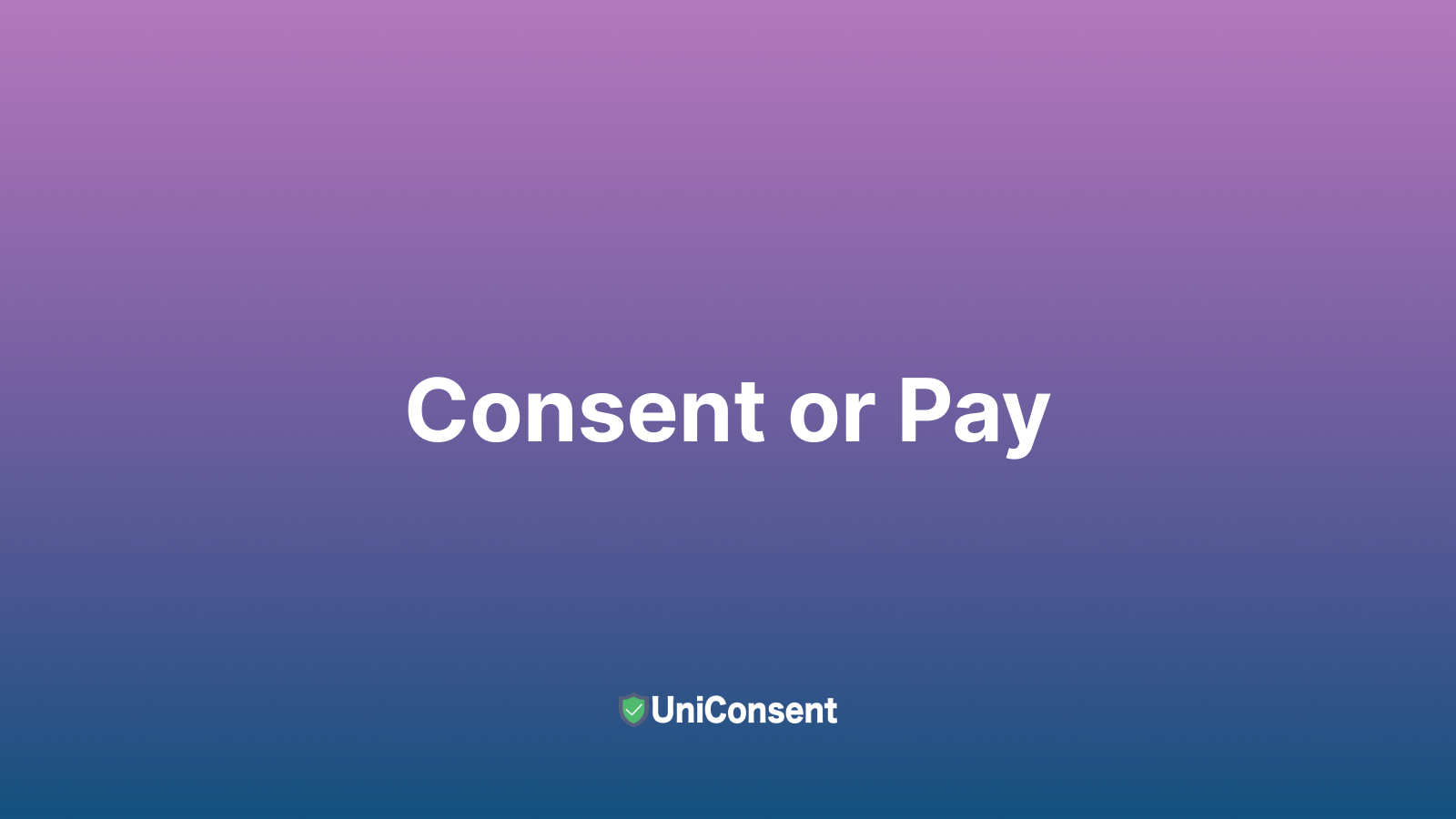The Consent or Pay Model
The consent or pay model is a new approach being adopted by digital media, where users are given two choices, consent to cookies that track advertising content or pay for a subscription to enjoy an ad-free experience. The model reflects the media industry's response to privacy laws such as GDPR, which restrict data collection without user consent.

In recent years, the "consent or pay" model has gained prominence in the digital publishing sector, particularly in the United Kingdom. This model provides users with a choice: consent to cookie-based advertising tracking or pay for an ad-free experience. It reflects publishers’ attempts to reconcile growing privacy concerns with the need to sustain revenue streams in a privacy-centric regulatory environment.
What is the "Consent or Pay" Model?
The "consent or pay" framework offers users two distinct options:
- Consent to the use of cookies for targeted advertising, enabling free access to content funded by ad revenue.
- Pay for a subscription to access content without being subject to tracking or targeted ads.
This approach has been adopted by several leading UK publishers, including The Sun, Mirror, and Daily Express. These platforms aim to adapt to stringent data protection laws, such as the General Data Protection Regulation (GDPR), which significantly restricts the use of tracking technologies without explicit user consent.
GDPR and Its Influence on the "Consent or Pay" Model
GDPR Consent Requirements
The GDPR sets a high bar for obtaining valid user consent. To comply, consent must be:
- Freely Given: Users must have a genuine choice without facing undue pressure or coercion.
- Specific and Informed: Consent must be based on clear and unambiguous information about what users are agreeing to.
- Unambiguous: Users must take a clear affirmative action, such as clicking a checkbox or button, to provide their consent.
When users decline to consent, publishers can legally offer alternative access models, such as paid subscriptions. However, concerns arise when these choices appear coercive or overly restrictive, prompting scrutiny from regulators.
Compliance Challenges: Valid Consent vs. Coercion
The European Data Protection Board (EDPB) has raised concerns about whether "consent or pay" models genuinely align with GDPR principles. If the subscription option is disproportionately expensive or if alternatives are limited, the user’s choice may not be considered “freely given,” potentially undermining the validity of consent.
For instance, GDPR compliance requires that paid options are reasonably priced and offer comparable value to the free, ad-supported service. Without this equivalence, publishers risk falling afoul of regulations.
Real-World Examples of the "Consent or Pay" Model
Several major UK publishers have implemented this model with varying price points:
- The Sun: Provides an ad-free subscription option for £4.99 per month.
- Reach plc (Mirror, Daily Express): Offers a "Privacy Plus" subscription for £1.99 per month, removing targeted ads and tracking.
These fees reflect publishers' efforts to offset the revenue lost from users opting out of ad-supported content.
Ethical Considerations and Business Implications
While the "consent or pay" model offers transparency and user control, it raises ethical and practical concerns:
Ethical Issues
-
Privacy as a Fundamental Right
Critics argue that privacy should not be treated as a commodity, accessible only to those who can afford it. Monetising privacy risks exacerbating digital inequality, leaving economically disadvantaged users with fewer options. -
Transparency vs. Coercion
Although the model provides users with clear choices, it may unintentionally coerce users into consenting due to financial constraints, undermining the principle of freely given consent.
Business Implications
- Revenue Diversification
The model represents a strategic pivot for publishers seeking alternative revenue streams amidst tightening regulations.
- User Engagement
By offering privacy-conscious options, publishers may foster trust and loyalty among privacy-sensitive users, potentially creating long-term value.
Regulatory Oversight and Future Developments
Both the UK’s Information Commissioner’s Office (ICO) and the EDPB are actively examining the "consent or pay" model. Key considerations include:
- Fairness of Fees
The ICO is investigating whether the cost of ad-free subscriptions is proportional and reasonable. Excessive pricing could be interpreted as coercive, undermining compliance with GDPR principles.
- User Rights
Regulators are scrutinising whether these models provide users with sufficient, equitable alternatives to consent-based tracking.
Potential Impact on Digital Advertising
Should regulatory authorities impose stricter guidelines, publishers may need to rethink the structure of their subscription models, potentially offering more affordable or innovative alternatives. This could reshape digital advertising strategies, driving greater emphasis on privacy-compliant approaches like contextual advertising.
Find More Information
Comply With Global Privacy Regulations
Get started to make your website and application compliant for EU GDPR, US CPRA, CA PIPEDA etc
Sign up